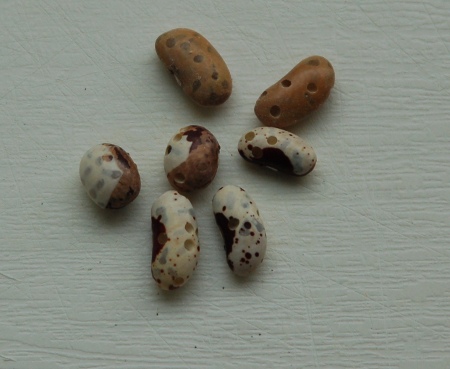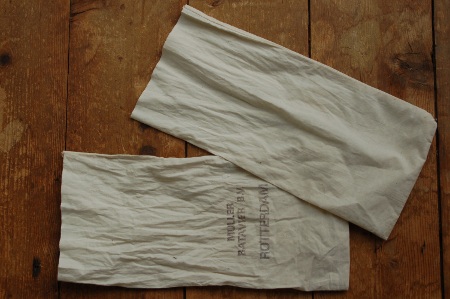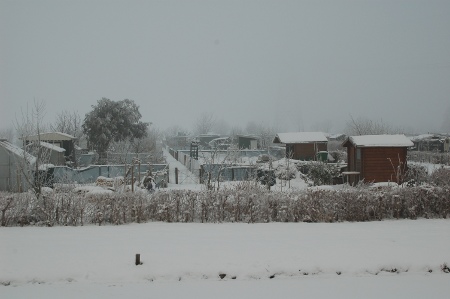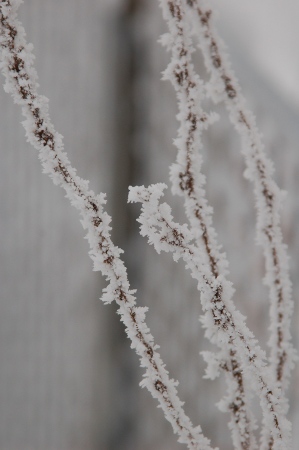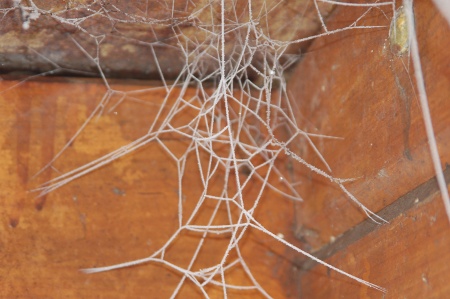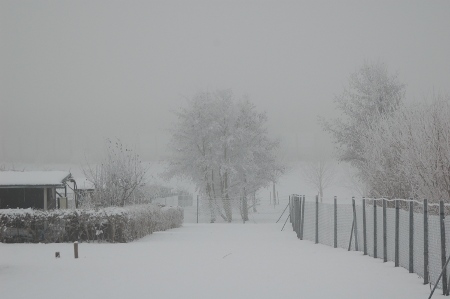I had a soil test of my garden done last summer, and I’ve been meaning to post the results. Since they are in Dutch, and probably not many of my readers can understand them as they are, I will attempt to translate. However the original report can be found here.
You can compare this to my earlier do-it-yourself efforts at soil testing.
Measured values are given first, followed by target values in parenthesis if these are given in the original report.
Organic Material 10.3%
Calcium 2-5%
pH (KCl method) 7.2 (>6.4)
Available Nutrients:
Phosphorus 58 (45)
Potassium 22 (21)
Magnesium 230 (125)
Nitrogen 1.4 (1.0)
Unavailable Nutrients:
Phosphorus 1370 (1000)
Potassium 5 (7)
Biological Activity:
Detected mg of CO2 per 100g per 7 days 86 (70)
Conclusions and Advice:
Conclusion: Soil has a high organic content, and a good pH level. For most nutrients, there is sufficient to excessive available and unavailable amounts. There is sufficient nitrogen and biological activity.
Advice: Add 300 liters of fresh manure or high quality compost per 100m2. As an alternative, 50 liters of dried cow manure per 100m2. The actual amount varies with crops grown. Lime loving plants (soft fruit, potatoes, cabbage, carrots, etc) 2 kg of (dolomite) lime per 100m2. Nitrogen loving plants (soft fruit, potatoes, leaf vegetables, cabbage, beet, etc) only in case of slow growth 500g nitrogen per 100m2 in the form of dry organic fertilizer. For example, this can be 4Kg bone or blood meal per 100m2. Further fertilizing is not necessary.
The advice seems to be open to some interpretation. I probably don’t add quite as much compost as they say here, and I don’t add any of the other fertilizers or manures, but since they say amounts vary with crops grown I guess you could say I’m following the advice. It’s worth mentioning I also grow a lot of nitrogen fixing plants.
At the same time I could be adding an awful lot of manures and nitrogen fertilizers and also be following the advice. 300 liters of fresh manure per 100m2 is an awful lot!
I think it’s more a part of the culture here to depend on soluble nitrogen in the form of manures or fertilizers, rather than fixed nitrogen, and that may be part of the reason the advice is given in the way it is. The test doesn’t seem to show fixed nitrogen.
The excessive availability of some of the nutrients is probably related to past chemical fertilizer use.
I purposely waited until the end of the second growing season to do this test, so I had a chance to amend the soil and grow some nitrogen fixing plants. I also wanted to give any previously used fertilizers a chance to wash away.
I do sometimes notice low nitrogen levels, and I also notice when I grow a heavy feeder like sweet corn, the soil is pretty depleted for the next season. Mostly my experience is that my soil is in pretty good shape, and this test seems to confirm that. It can also be true that some of the excessively high levels of the major nutrients (NPK) can tie up and make unavailable some of the micronutrients, and I could be having problems with this.


